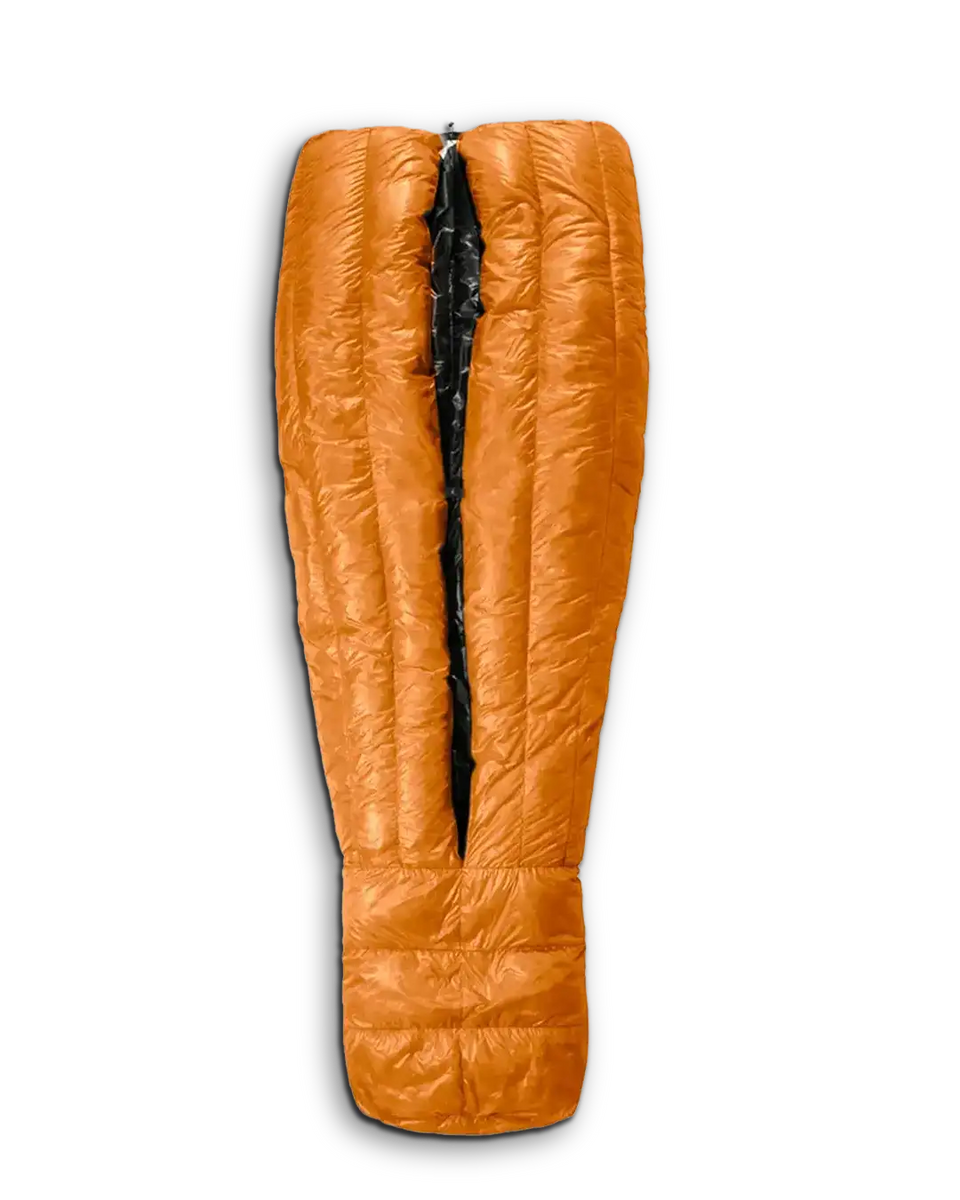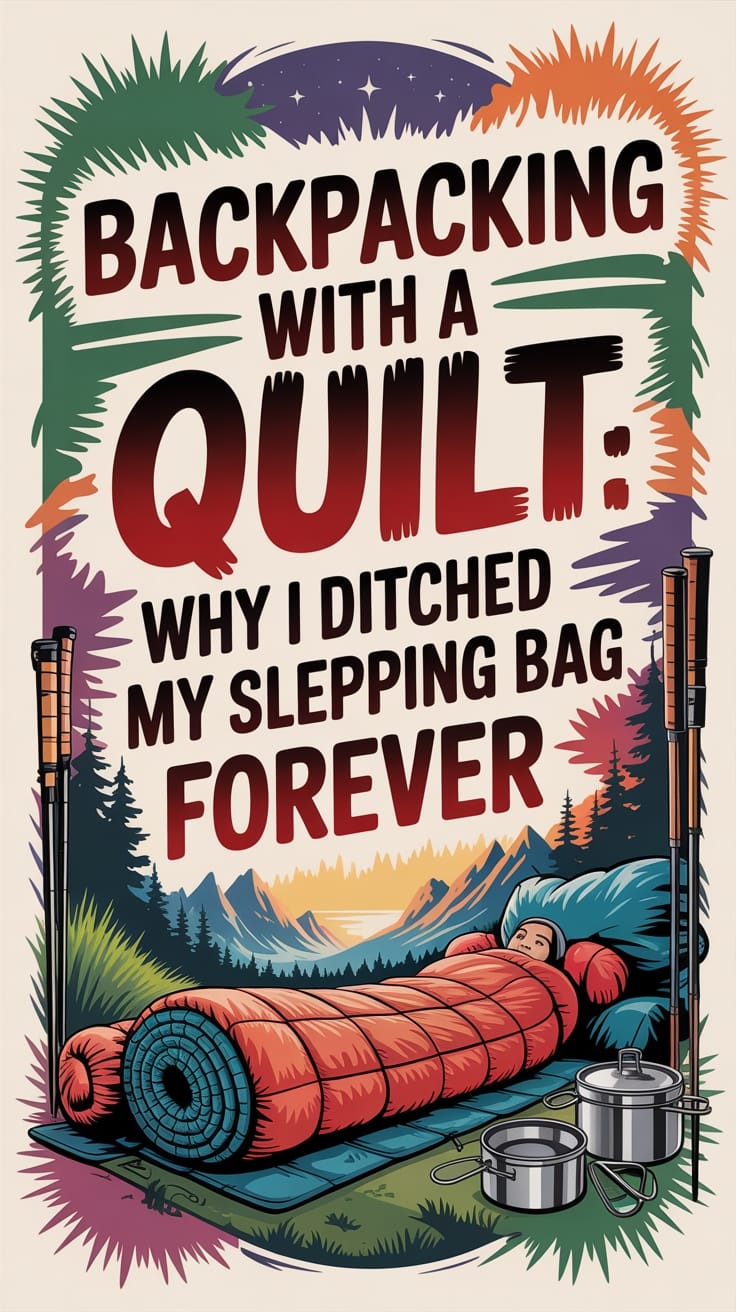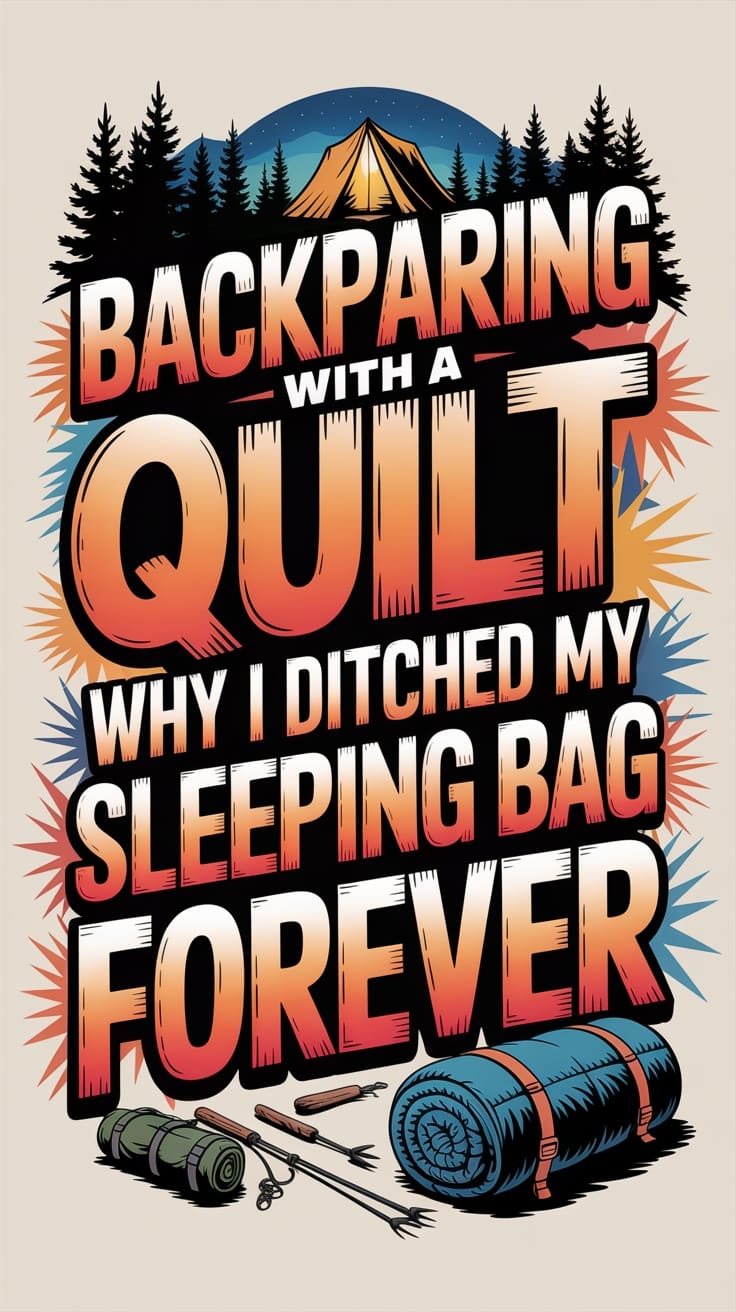Backpackers are ditching sleeping bags for quilts as the weight savings alone makes it worthwhile. A typical quilt weighs 17% less than a comparable sleeping bag, saving over 4 ounces of dead weight. That's just the beginning. Quilts pack smaller, offer better temperature control in warm weather, and cost less than premium sleeping bags. Sure, there's a learning curve with drafts and setup, but most hikers never look back once they master the basics and discover what they've been missing.
The Weight Revolution That Changed My Hiking Experience
The numbers don't lie—quilts are simply lighter than sleeping bags.
Take the REI Magma 30: the quilt version weighs 20.3 ounces while the sleeping bag hits 24.4 ounces. That's 4.1 ounces saved, or 17% less weight for identical warmth ratings.
The secret? Quilts ditch the back insulation that gets compressed anyway. No hood, no full-length zipper, less fabric overall. It's brilliant in its simplicity.
Hikers notice the difference immediately. Less weight means better mobility, fewer breaks, longer hiking days.
The cumulative effect over miles? Significant reduction in fatigue and injury risk. Some high-end quilts like the Hammock Gear Burrow 30 weigh just 16 ounces.
Every ounce matters when you're carrying your home on your back for days. Quilts offer increased freedom of movement during sleep, allowing you to shift positions naturally without feeling constricted.
This weight advantage makes quilts particularly appealing to thru-hikers and bikepackers who prioritize every gram in their gear selection.

Temperature Control and Versatility in the Wilderness
When temperatures drop in the backcountry, quilts become a game of trade-offs that some hikers love and others absolutely hate.
Sure, you can stuff more down into a quilt to boost warmth. But drafts? They're still going to sneak in and make you miserable. Your head gets cold. Your feet turn into popsicles. And suddenly you're playing gear Tetris with extra hats and fancy footwork strategies.
The real kicker? You absolutely need a high R-value sleeping pad or you're toast. Many quilts include attachment systems that secure the quilt to your sleeping pad, which helps reduce those annoying drafts.
But here's where quilts shine: warmer weather. They're brilliant for three-season backpacking. Freedom of movement? Check. Use it like a blanket when it's muggy? Perfect. Some models even include enclosed toe boxes for extra foot warmth without the bulk of a full sleeping bag.
Packing Efficiency and Space Management Benefits
As ultralight backpackers obsess over every ounce, quilts have become their holy grail of sleep systems.
The math is simple. Less material equals less weight. No hood, no bottom insulation, no unnecessary bulk.
Quilts compress smaller than sleeping bags. Period. This means backpackers can actually use smaller packs, which saves even more weight.
It's a beautiful cycle of efficiency that gear nerds absolutely love.
The real genius? Quilts can be stuffed loose at the bottom of a pack, filling awkward spaces that would otherwise go unused.
Try doing that with a bulky sleeping bag.
Space optimization becomes critical on longer trips when every cubic inch matters. Some ultralight options weigh as little as 11 ounces, making them particularly appealing for summer backpacking trips.
Quilts deliver on this front, allowing room for essential gear without compelling backpackers into oversized packs. Unlike sleeping bags, quilts also function as versatile camp blankets for use around the fire or in your car.
Overcoming the Learning Curve and Draft Challenges
While veteran backpackers make quilt setup look effortless, newcomers quickly discover the harsh reality. That first night? Pure misery. The quilt shifts constantly, creating gaps that invite arctic blasts directly onto exposed skin. Side sleepers face particular torture as cold air sneaks in through every opening.
Learning the attachment system becomes critical. Straps, clips, hooks—whatever keeps that thing anchored to the sleeping pad. Most people need several trips before mastering the nuances.
Draft collars and cinch cords help minimize air infiltration around the torso. Proper sizing matters too; gaps equal frozen limbs. Many users find webbing straps preferable for easy adjustability during those inevitable nighttime adjustments.
The real challenge? Quilts depend entirely on sleeping pad insulation underneath. Without adequate R-value, warmth disappears instantly. Position changes require constant re-tucking. For three-season conditions, aim for at least 4 R-value on your sleeping pad. It's frustrating initially, but persistence pays off eventually.
Cost Analysis and Long-Term Value Assessment
Money talks, and quilts whisper sweet savings into backpackers' ears.
Budget quilts start at $180, while comparable sleeping bags rarely dip below $200. High-end quilts max out around $400-500, but sleeping bags can hit $600. The math gets better over time.
Quilts last longer since they're simpler. No zippers to break. No hoods to tear. Fewer moving parts means fewer repair bills.
Weight savings translate to real value. Every ounce matters on long trips. Pack space matters more. The warmth-to-weight ratio becomes the deciding factor for serious ultralight enthusiasts.
Down quilts tend to hold resale value better than bags within the ultralight community. Synthetic versions degrade faster but still outlast equivalent bags.
If you're unsure about making the switch, quilts offer excellent resale potential for testing the waters without major financial loss.
Simple economics favors the quilt.









